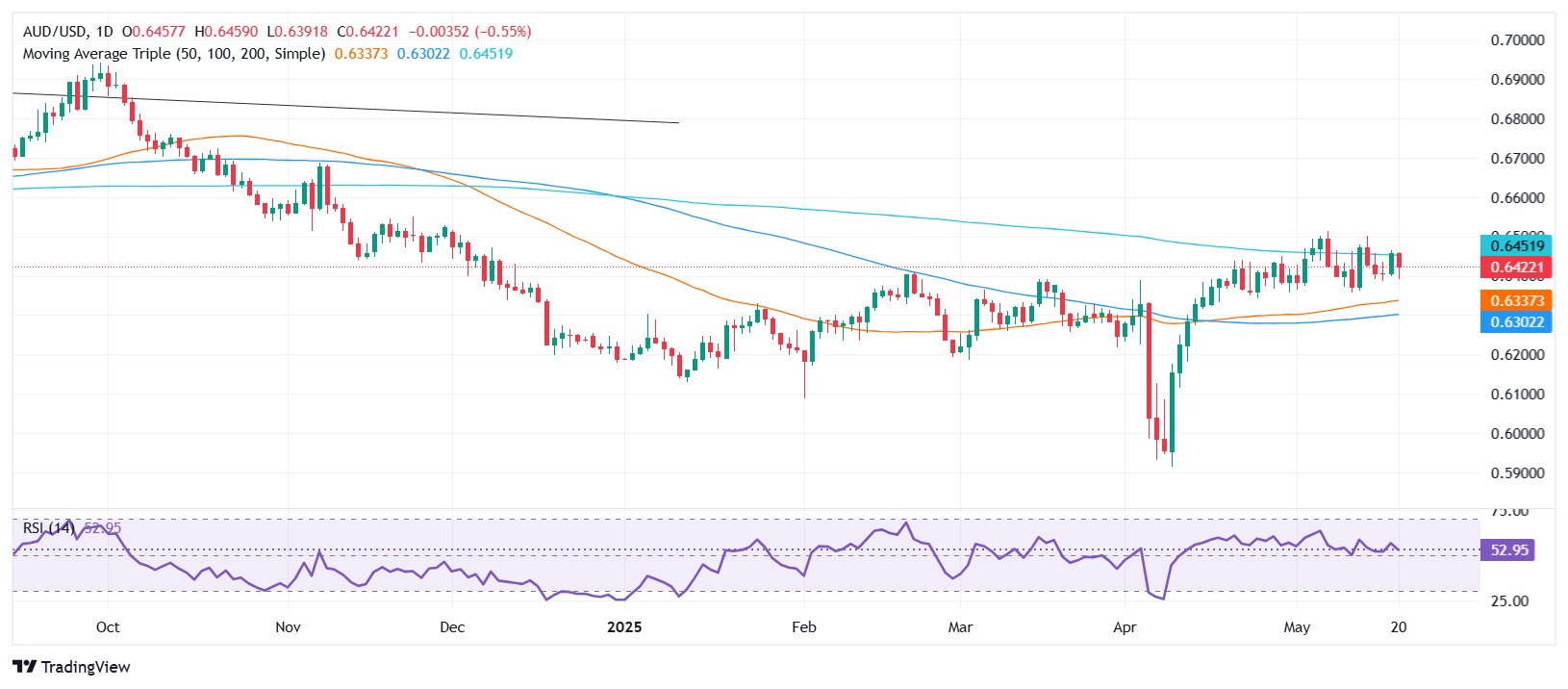- The AUD/USD remains flat at 0.6420 in the first Asian session after falling 0.49% on Tuesday, since the RBA cut the 3.85% rates.
- The RBA opted for a 25 basic points cut, citing more balanced inflation risks and greater global uncertainty.
- Governor Bullock points out flexibility, says the RBA is ready to act more if necessary, but does not provide guidance on the terminal rate.
The Australian dollar (Aud) begins the Asian session practically unchanged against the US dollar (USD) on Wednesday, after a loss of 0.49% in the previous session, since the Bank of the Australian Reserve (RBA) reduced interest rates. At the time of writing, the aud/USD is traded at 0.6420 plane.
The AUD/USD remains stable about 0.6420 after the rate cut of 25 basic points of the RBA
During the American session, the AUD/USD recovered some land after reaching a daily minimum of 0.6391, since the RBA cut the 25 basic points (BPS) from 4.10% to 3.85%. The RBA discussed whether to cut the rates in 50 or 25 bps, judging that the risks for inflation had become more balanced, while noticed that uncertainty in the global economy had increased in the last quarter.
The RBA revealed that it expects average cut inflation to be 2.6% in June 2025. They expect the Australian economy to grow 1.8% in June 2025 and 2.2% in 2026.
The governor of the RBA, Michele Bullock, said that the RBA is ready to take more measures on the rates if necessary, recognized that inflation has decreased and expressed confidence in reducing rates. However, he did not specify where he sees that the rates finally end.
Prime Market Terminal data suggest that the operators had incorporated more than 75 BPS of relaxation towards the end of the year.
The news flows during the American session on Tuesday revealed that the operators’ approach is in the approval of the “One Big Beautiful Bill” by US President Donald Trump. The economic agenda remained scarce, with lack of commercial agreements and a limited economic calendar.
However, some federal reserve officials made headlines. The president of the Fed of St. Louis, Alberto Musalem, commented that monetary policy is well positioned and added that if inflation expectations are disagree, Fed should prioritize inflation reduction. Cleveland’s Fed, Hammack, said he sees a stagflation scenario, and the president of the Atlanta Fed, Bostic, said that Fed needs to be safer about the prospects to feel comfortable about how monetary policy should change.
Ahead, the Australian economic agenda will include the publication of the advanced compound index and the RBA Chart Pack.
Graphic Diary Aud/USD prices

Australian dollar price this week
The lower table shows the rate of change of the Australian dollar (AUD) compared to the main currencies this week. Australian dollar was the strongest currency against the US dollar.
| USD | EUR | GBP | JPY | CAD | Aud | NZD | CHF | |
|---|---|---|---|---|---|---|---|---|
| USD | -0.86% | -0.80% | -0.61% | -0.45% | -0.26% | -0.72% | -1.10% | |
| EUR | 0.86% | 0.04% | 0.31% | 0.47% | 0.73% | 0.20% | -0.24% | |
| GBP | 0.80% | -0.04% | -0.04% | 0.43% | 0.69% | 0.16% | -0.28% | |
| JPY | 0.61% | -0.31% | 0.04% | 0.17% | 0.53% | 0.10% | -0.43% | |
| CAD | 0.45% | -0.47% | -0.43% | -0.17% | 0.20% | -0.28% | -0.70% | |
| Aud | 0.26% | -0.73% | -0.69% | -0.53% | -0.20% | -0.52% | -0.94% | |
| NZD | 0.72% | -0.20% | -0.16% | -0.10% | 0.28% | 0.52% | -0.44% | |
| CHF | 1.10% | 0.24% | 0.28% | 0.43% | 0.70% | 0.94% | 0.44% |
The heat map shows the percentage changes of the main currencies. The base currency is selected from the left column, while the contribution currency is selected in the upper row. For example, if you choose the Australian dollar of the left column and move along the horizontal line to the US dollar, the percentage change shown in the box will represent the Aud (base)/USD (quotation).
Source: Fx Street
I am Joshua Winder, a senior-level journalist and editor at World Stock Market. I specialize in covering news related to the stock market and economic trends. With more than 8 years of experience in this field, I have become an expert in financial reporting.







